Search
Search Results
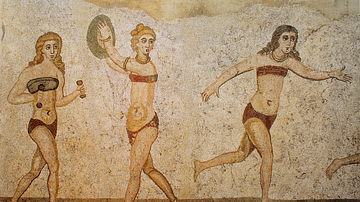
Image Gallery
Sports in the Ancient Mediterranean
Sports and athleticism was a cornerstone of life in the ancient Mediterranean. Hunting, dancing, gymnastics, and charioteering were favorite sports of the elite in Mesopotamia, Egypt, Greece, and Rome. The Greeks and Romans were especially...
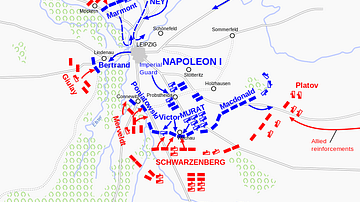
Image
Battle of Leipzig, 16 October 1813
Actions of the first day of the Battle of Leipzig, 16 October 1813. Map by Wikipedia user Andrei nacu, 2007.
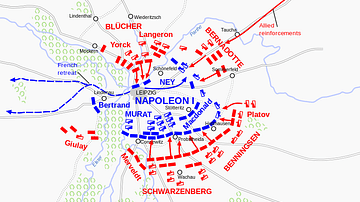
Image
Battle of Leipzig, 18 October 1813
Actions on the second day of the Battle of Leipzig, 18 October 1813. Map by Wikipedia user Andrei nacu, 2008.
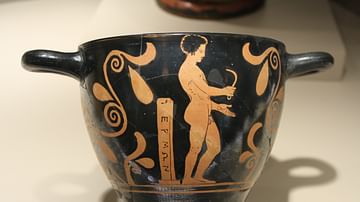
Image
Greek Athlete With Strigil
Red figure skyphos or cup (410 BCE) depicting a nude athlete holding a strigil - used to clean the body of oil, dust and sweat after exercise. To the left is possibly a mid-race marker post. Attributed to the Amykos painter, Lucana (Southern...
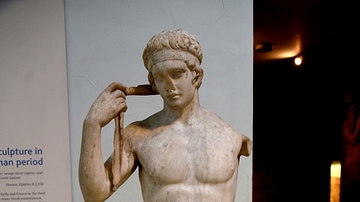
Image
Victorious Young Athlete, the Farnese Diadoumenos
The statue shows a young athlete tying a ribbon around his head, signifying that he has just won a competition. Which event the youth won is unknown but athletic figures of this type were a common theme in Greek art. A victor statue by the...
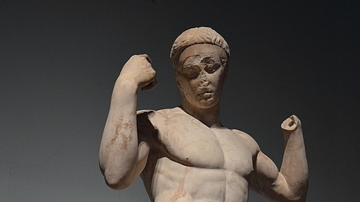
Image
Victorious Athlete: The Vaison Diadumenos
Statue known as the Vaison Diadumenos (ribbon wearer) depicting an athlete tying a victor's ribbon around his head. It was found at the Roman theatre of Vaison-la-Romaine (France). Hadrianic copy (2nd century CE) after a 5th century BCE original...
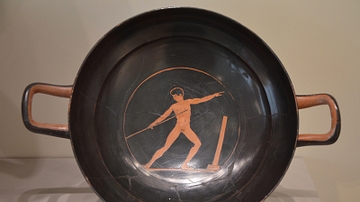
Image
Attic Red-figure Kylix
Attic red-figure cup (kylix) depicting an athlete ready to throw the javelin, from Vulci (Italy), around 440/430 BCE.
(Altes Museum, Berlin).
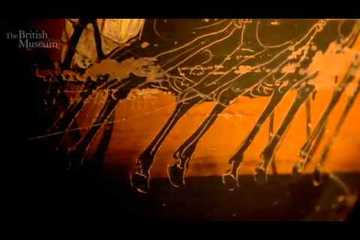
Video
Prize amphora showing a chariot race
Chariot-racing was the only Olympic sport in which women could take part, as owners of teams of horses. Kyniska, a princess of Sparta, was the first woman to win the Olympic crown in this sport. British Museum curator Judith Swaddling describes...
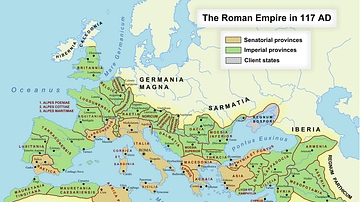
Image
Roman Empire in 117 CE
Map of the Roman Empire at its maximum extent in 117 CE, under the rule of Trajan.
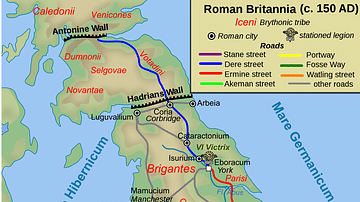
Image
Map of Roman Britain, 150 AD
Map of Roman Britain ca. 150 AD, showing the main Roman roads, cities, and Brythonic tribes.